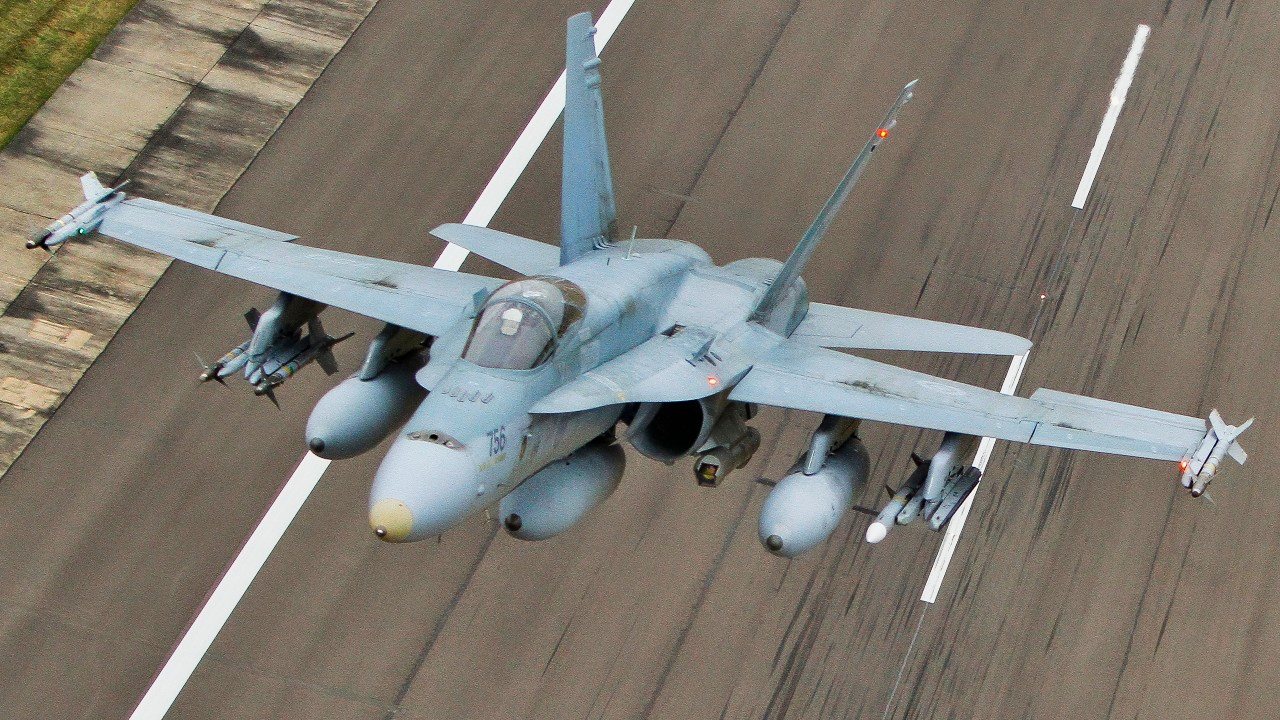The F/A-18 Block III Super Hornet Is a Fighter Like No Other
The F/A-18 multi-role fighter, serving the US Navy for nearly 40 years, has evolved through multiple upgrades to stay relevant.
Summary: The F/A-18 multi-role fighter, serving the US Navy for nearly 40 years, has evolved through multiple upgrades to stay relevant.

-The latest iteration, the Block III "Super 'Duper' Hornet," features a streamlined cockpit with a customizable touchscreen, advanced network capabilities, and improved mission computing power. While it lacks full stealth technology, its reduced radar cross-section makes it harder to target.
-The Block III boasts a longer lifespan of 10,000 flight hours, increased range with conformal fuel tanks, and is designed to operate safely beyond the range of China's hypersonic anti-ship missiles.
F/A-18 Block III: Extended Lifespan and Advanced Capabilities
The McDonnell Douglas (Now made by Boeing) F-18 multi-role fighter has been the versatile workhorse of the US Navy for nearly 40 years.
To stay relevant and competitive over four decades, multiple iterations of the F-18 have been released, each an upgrade from the previous.
The original Block I “Hornet” was a fourth-generation fighter, designed in the 1970s, that became operational in 1984. The upgraded Block II “Super Hornet” was delivered in 2005.
And just a few years ago, the US Navy accepted delivery of the Block III, which some are calling the “Super ‘Duper’ Hornet.”
With various improvements over the Block II, the Block III delivery ensures that the F-18 will remain the US Navy’s workhorse – capable of every mission in the tactical spectrum – for the foreseeable future.
Here are the Block III’s improvements:
What Makes the F/A-18 Block III Special
While the Block II’s cockpit featured a kaleidoscope of screens and gauges, the Block III cockpit has been streamlined with the Advanced Cockpit System, which features a simple (and customizable) 10x19 inch touchscreen.
The simplified cockpit was designed to help the pilot access more information more quickly through the integrated display. The new cockpit is more user-friendly – giving the pilot better “vision” of the battlespace.
The new user-friendly cockpit will be useful when accessing the increased data available through the Block III’s improved network capabilities. As information sharing becomes a standard feature of battlefield equipment, the Block III was designed with advanced features to help collect and share information.
The Block III’s Distributed Targeting Processor-Networked (DTP-N) mission computer is a drastic upgrade from the Block II’s mission computer. In fact, the DTP-N is 17 times more powerful. The Block III will share information through the Tactical Targeting Network Technology (TTNT) data link.
Granted, with respect to networking capabilities, the F-35 Joint Strike Fighter is still the preeminent system – but the Block III F-18 represents a marked improvement over the Block II.
When the original Block I F-18 was designed, stealth technology was not a prerequisite of fighter aircraft. Actually, stealth fighter technology would not be disclosed to the public until 1988, when the US Air Force unveiled the F-117 Nighthawk.
So, when the F-18 became operational in 1984, its lack of stealth technology was a non-issue. Of course, air defense systems have become more sophisticated over the last forty years, and stealth technology has become something of an expectation for all new fighter and bomber aircraft. Well, the Block III still lacks stealth technology – despite a reduced radar cross-section. Yet, Boeing designers have worked to make the Block III harder to “lock on” to.
Meaning, an enemy may spot the Block III, but it will be more difficult for enemy aircraft or surface-to-air missiles to secure a weapons-grade lock and engage the Block III.
The Block III has a sixty-six percent longer lifespan than the Block II. Whereas the Block II is only rated for a 6,000 flight hour life, the Block III was designed to last for 10,000. The longer lifespan, of course, reduces costs – and is better suited for a fighting force with a tendency to engage in multiple, ceaseless, neverending combat operations.

Designed with China in mind, the Block III has more range than its predecessor. With conformal, shoulder-hugging, drag-reducing fuel tanks capable of carrying 3,500 pounds of fuel, the Block III will be able to conduct missions against Chinese targets that allow US aircraft carriers to loiter beyond the range of China’s hypersonic anti-ship missiles.
The Block II (or F-35), on the other hand, with its more limited scope, would have required US carriers to loiter and launch missions from within China’s missile range – an unacceptable risk.
About the About: Harrison Kass
Harrison Kass is a prolific defense and national security writer. An attorney, pilot, guitarist, and minor pro hockey player, he joined the US Air Force as a Pilot Trainee but was medically discharged. Harrison has degrees from Lake Forest College, the University of Oregon School of Law, and New York University’s Graduate School of Arts & Science. He lives in Oregon and regularly listens to Dokken.
All Images are Shutterstock.


